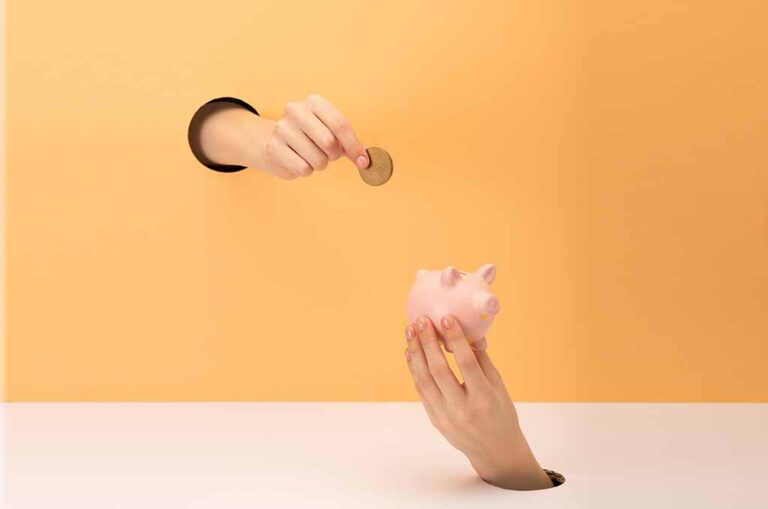When the pandemic began in early 2020, many office workers transitioned to working from home full-time. Work clothes were traded in for yoga pants and more casual attire.
Fast forward two years, and many people are heading back to the office for the first time since 2020. After working from home for so long, though, there’s a good chance your wardrobe needs a refresh. Maybe you sold or donated unused clothes, your size has changed, or you’ve changed your taste and personal style.
An entirely new work wardrobe doesn’t come cheap, and inflation certainly hasn’t helped. So how can you buy new work clothes on a budget, without going into debt?
Take inventory of what you have
If you’ve been working from home in athleisure for the past two years, there’s a good chance you don’t even remember what your work wardrobe looks like. Even if that’s not quite the case, the best place to start with figuring out what you already have.
As you’re looking through your closet, you may find a few hidden gems that you can incorporate into your new work wardrobe. On the other hand, you might find that everything is either outdated or no longer fits.
It doesn’t matter if you keep anything, everything, or nothing at all. This first step gives you an idea of where you’re starting from and allows you to be specific and intentional with your shopping.
Revisit the dress code
Before investing in any new pieces, double-check the office’s dress code; your company may have updated it. In that case, what you’ve been wearing at home will work just fine for the office.
If your workplace has no written dress code, you have a few options. Your safest bet will be to reach out to your manager and/or HR representative and ask them about any changes.
If you don’t want to ask, you can always pop into the office for a few days and peek at what everyone else is wearing. Then you can take your cues from there.
Set a budget
One of the problems with clothes shopping is that it’s so easy to get carried away. To help prevent this, set a budget for your new wardrobe ahead of time.
A great place to start when planning your clothing spending is your actual budget. If you don’t already have a budget, now is the time to get started. Personal Capital and Quicken are two options. Both can help you quickly put together a budget and track your expenses each month.
The other thing to consider when setting your clothing budget is what you actually need. If your workplace has you on a hybrid schedule, you’ll only need about half of what a full-time in-office role would require.
Planning what you actually need will help you spend less money on work clothes, even if you have a roomy budget for it
Start with the basics
When you’ve been working from home for two years, you might be excited to start buying fun and fancy dress clothes. Most of us haven’t had an excuse to get dolled up in a while!
This is where you need to slow down. The last thing you want is to fill your closet with statement pieces… and show up to work embarrassed and overdressed.
Start with the basics. Think about pieces you’ll wear all the time, such as slacks, polos, blazers, blouses, and dresses. Get a mix of neutral colors and vivids, so they’re easy to coordinate.
When it comes to basics, it makes sense to invest in high-quality clothes. Since you’ll be wearing them day in and day out, a higher-quality piece means you won’t have to replace them quickly. Even though high-quality means a high price tag, this saves you money in the long run!
Consider a capsule wardrobe
Capsule wardrobes were popular before the pandemic, and they make even more sense now. A “capsule wardrobe” is a small collection of clothing with pieces that all pair well together.
When you build a capsule wardrobe, the goal is to have as few pieces of clothing as possible. Stick to the same general color scheme, though, because you still want to create lots of different outfits from it.
Capsule wardrobes have plenty of benefits, including less decision fatigue and lower cost up-front. This might allow you to invest in high quality pieces even on a low budget.
Take your time
You don’t have to build your entire wardrobe at once. When working on a tight budget, make a list of pieces you want to buy. Then purchase one or two at a time, starting with the most critical basics. (Hello, “real” pants.)
Spreading out your purchases lets you spend less during any one month. You also have time to search for things you’ll really love, instead of getting them all in one place to “get it over with”.
Start by setting a rule, maybe a certain number of pieces or a certain dollar amount. Once you hit that, you’re done till next month.
This method is great if you’re the kind of person who dreads shopping. No need for one, miserable shopping sprint. Instead, take the time to enjoy picking out well-fitting clothes that perfectly match your style, one at a time.
Buy multi-functional pieces
It’s frustrating to buy clothing you’ll only wear at work. Even your favorite “work shirt” may still be just that. A work shirt that doesn’t translate well anywhere else.
Know how to get the biggest bang for your buck? Focus on finding pieces that you can use both in and out of work.
Many companies are starting to make work clothes that are comfortable outside of work, as well. For example, dress pants made of the same soft, flexible material as yoga pants, or polos using the same breathable material as sports shirts.
Even if that doesn’t work for your office, pick pieces you can layer with both work clothes and casual clothes. You’ll stretch your dollar farther while also picking clothes you love in and out of the office.
Host a clothing swap
A clothing swap is a great way to get rid of unwanted clothing, fill up a new wardrobe, and meet new people, all in one.
Everyone brings some clothes that don’t fit them or match their style to the swap. Then, you look through the pieces others have brought and grab what you like, and they do the same.
There are plenty of benefits to a swap. The most obvious perk is that no one has to spend money. It’s fully a barter system where everyone gives what they have extra of and takes what they still need.
Swaps are also much more sustainable. Around 85% of textiles are dumped or burned in the US. A swap ensures clothes are filling your wardrobe, not a landfill.
You can organize a clothing swap by asking around at work, inviting friends (and having them invite other friends), or posting the event on social media. (And make sure you follow some internet safety guidelines.)
Sell unused clothing
If a swap is off the table, try selling your unwanted clothes. While not quite as seamless as a swap, selling your clothes still reduces the out-of-pocket cost you’ll pay for new clothes.
The best part? You have plenty of options. Many for-profit thrift stores allow you to exchange clothing for in-store credit or a discount.
You can use a website like Thredup to send a bag of clothing you don’t want in exchange for cash. For higher-value and name-brand items, check out sites like Poshmark, where you list items yourself. (Though this does take a bit longer.)
Buy used
Used clothing is another way to be more sustainable while still filling your closet.
The places we discussed where you can sell unwanted clothing for cash are also great for finding gently used items for your wardrobe. (Some even have discounts for sellers.)
When you buy used clothing, you’re often able to get it for a fraction of the original retail price. Oftentimes, you’ll find something you couldn’t get anywhere else in like-new condition.
This is why buying used is an especially great option for adding statement pieces to your wardrobe. With the basics, new allows you to have a wider range of options and ensure you’ll get plenty of use from them. A statement piece you may only wear once or twice, though? Used is the way to go.
Shop discount stores
Struggling to find used options that fit your style? Look for discount stores or outlet stores. They sell many of the same pieces you’d find in a higher-end store.
These stores, however, sell items that were returned or had some small, usually unnoticable defect. This means the prices are significantly lower, and usually no one can tell the difference!
Look for deals online
These days, it’s easier than ever to find deals online. Thanks to coupons, deal sites, and browser extensions, you never need to pay full price. Here are just a few services that help you find deals for online shopping:
Capital One Shopping helps you earn and redeem shopping rewards with their browser extension. It automatically adds coupon codes and instantly compares prices. You don’t even have to have a Capital One account to use it!
Rakuten allows you to earn cash back on your online purchases. The extension lets you add coupons and offers to your purchase. Rakuten automatically tracks your total cashback and sends a check every three months with your earnings.
Honey searches the internet for coupon codes and automatically enters tens of thousands of them at checkout. Then, it adds the coupon code with the best discount. You can even save things for buying later if you aren’t quite ready.
Worry-free fashion on a budget
Shopping for clothes is stressful at the best of times. When you’re shopping for work clothes on a budget? Well, that turns things from bad to worse.
The good news is that you have options. Workplaces are going hybrid and relaxing dress codes, cutting your up-front clothes cost down quite a bit.
Finally, don’t forget that you’re not the only one with this problem. You might feel insecure while you’re still building your wardrobe, or worry that everyone is judging you for needing to change things up. Everyone is feeling that way.
Penny Calling Penny’s newsletter has more tips for saving money, budgeting, and more! Subscribe today and you’ll get tricks, advice, and more articles like this delivered right to your inbox.









